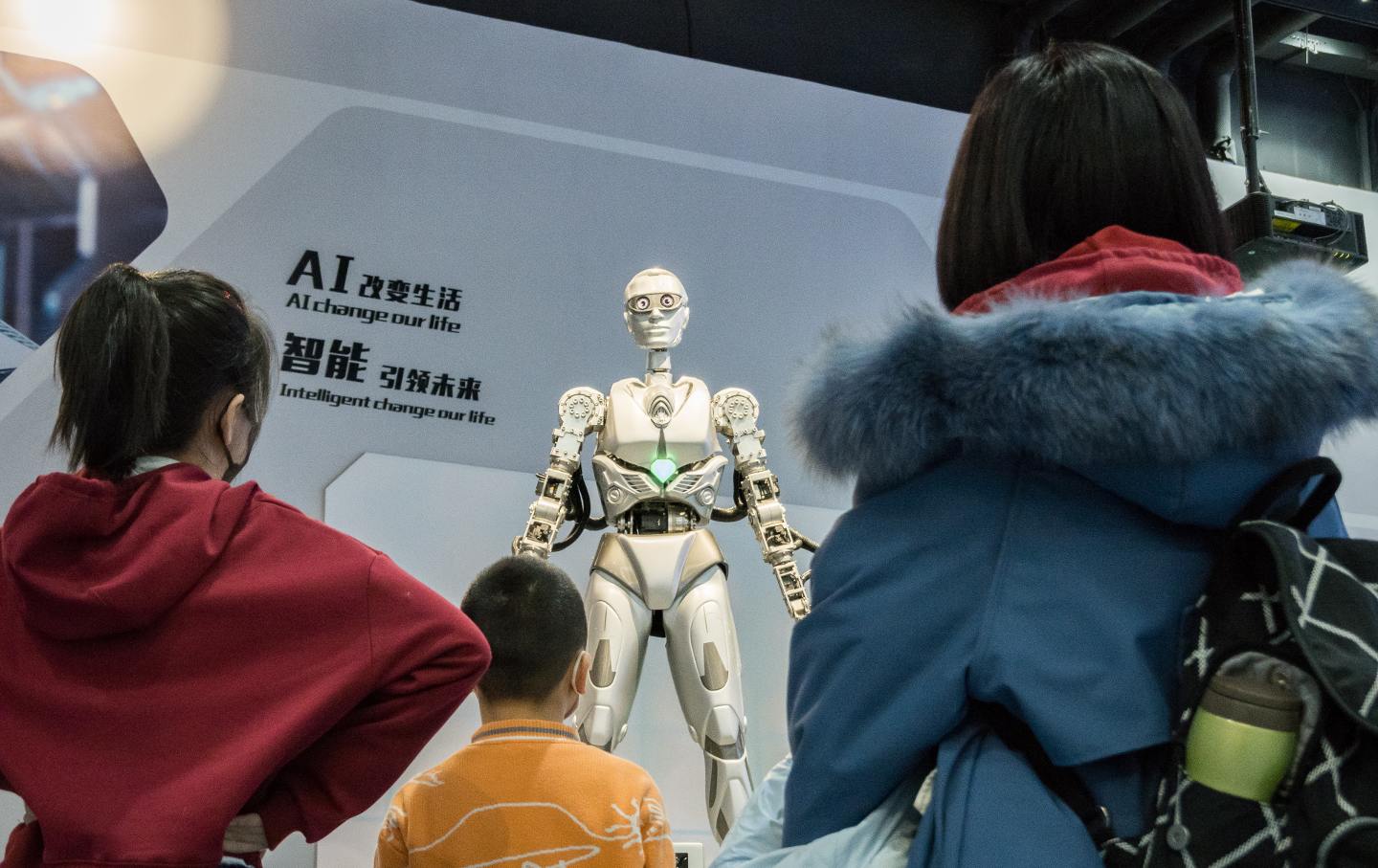China wants to challenge the U.S. in AI — here’s what Chinese giants are doing with the tech
Global attention around generative artificial intelligence has been focused on big U.S. companies like OpenAI, Alphabet
’s Google and Meta
.
But some of China’s giants, from Alibaba
to Tencent,
have launched their own AI models over the past 18 months, looking to capitalize on the hype around the technology.
China’s ambitions to become a world leader in AI adds another layer to the country’s technology battle with the U.S. China has been seen as playing catchup to the U.S. but the race is heating up.
Generative AI includes applications like OpenAI’s ChatGPT, which has the ability to generate text, images and even video based on user prompts. These applications are powered by large AI models which are trained on huge amounts of data, such as Google’s Gemini.
Chinese technology firms have had to tread carefully in releasing their technology as Beijing has strict requirements for AI models and their uses.
CNBC runs through the big Chinese AI models developed by the country’s biggest tech firms.
Baidu: ERNIE
Baidu
, one of China’s biggest internet companies, was among the first in the country to launch generative AI applications. Its model powers Ernie Bot, an AI chatbot designed to rival OpenAI’s ChatGPT and which the Chinese company says has 300 million users.
Before the “Turbo” version of the model, Baidu said that its latest version — Ernie 4.0 — has capabilities on par with OpenAI’s GPT-4. The foundational model can understand and reason, according to Baidu.
Like other companies, Baidu is selling the ability to use its AI model via its cloud computing division.
Alibaba: Tongyi Qianwen
Alibaba launched its set of foundational models, Tongyi Qianwen, last year. Often shortened to Qwen, Alibaba
has developed various versions that can carry out different tasks. For example, one model is focused on creating content or solving math problems. Another can understand audio-based inputs and give text-based outputs.
Some versions of its Qwen models are open-sourced, meaning they can be openly downloaded, with some limitations, and used by developers.
Alibaba said in May its Qwen models have been deployed by over 90,000 enterprise users.
Tencent: Hunyuan
Last year, Tencent launched its own foundational model called Hunyuan.
Companies can access Hunyuan’s capabilities via Tencent’s cloud computing business. Tencent
has said Hunyuan has strong Chinese language processing abilities and “advanced” logical reasoning. The model can support functions including image creation and text recognition.
Tencent has positioned the model as one that can be used by companies in industries from gaming to social media and e-commerce.
Tencent runs China’s biggest messaging app, WeChat. The company this year launched an AI chatbot based on its Hunyuan model. The AI assistant, known as Yuanbao, can pull information and content from WeChat, as Tencent looks to differentiate its offering from rivals.
Huawei: Pangu
Huawei has taken a slightly different approach to rivals with its Pangu AI models. It has created a number of AI models aimed at customers in specific industries including government, finance, manufacturing, mining, and meteorology.
For example, Huawei said its Pangu Meteorology Model can predict the trajectory of a typhoon over 10 days in around 10 seconds, rather than the four-to-five hours it took previously.
These models, sold through the firm’s cloud computing business, can also support generative features such as the ability to generate code and virtual human avatars.
ByteDance: Doubao
TikTok owner ByteDance launched an AI model this year, marking a late entrance into the race against competitors like Baidu and Alibaba.
ByteDance, however, brought out its AI model at a price much cheaper than the other companies.
The Doubao model has the ability to generate voices as well as generate code for developers, among other capabilities.



Post a Comment
0Comments